How Artificial Intelligence Is Changing Everyday Life
FEATUREDTECH & AI
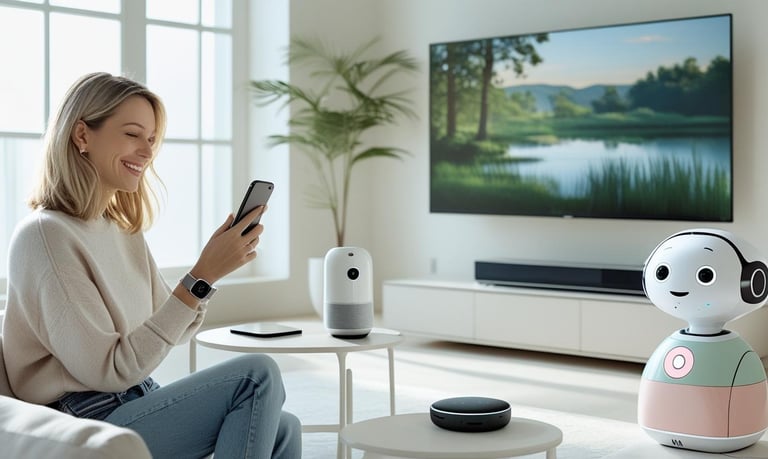

From smart homes to medicine, discover how artificial intelligence is quietly transforming everyday experiences and shaping the future of our daily lives.
Introduction
Artificial Intelligence used to feel like science fiction — something locked away in the labs of tech giants or the plots of futuristic films. But now? It’s in your phone, your refrigerator, your morning news feed. AI isn’t coming — it’s already here, reshaping how we live, learn, shop, work, and connect.
This shift is so seamless, many people don’t even realize it’s happening. But behind the scenes, algorithms are curating your playlists, helping doctors diagnose diseases, writing emails, powering chatbots, detecting fraud, and even predicting what you'll eat for dinner.
The question isn't "What can AI do?" — it's "How is it already quietly enhancing your life?"
In this blog, we’ll explore how AI is changing the world around us — not in the distant future, but right now, in everyday ways. From healthcare to creativity, let’s take a walk through the age of intelligent machines.
1. AI in Your Pocket: How Smartphones Became Smart
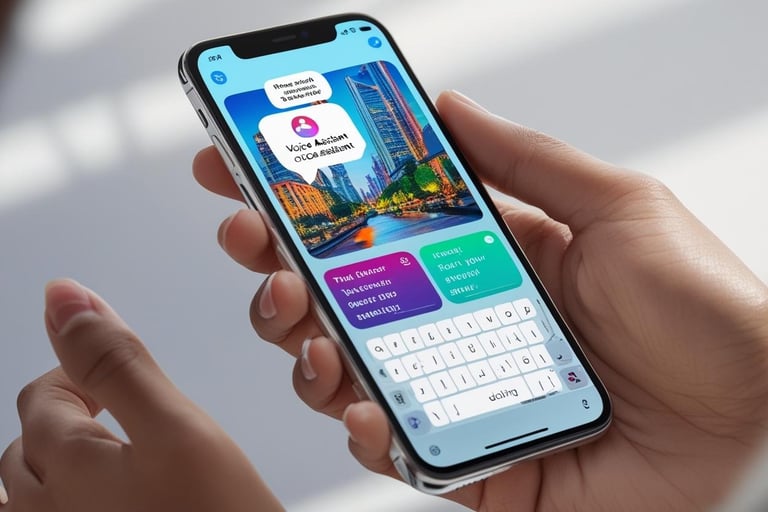

A moment we all know: You start typing a message, and your phone finishes the sentence. Or, you take a blurry photo, and the camera magically enhances it. Maybe you ask Siri to set a timer — and she does, without ever touching a button.
That’s AI at work.
Your smartphone is one of the most powerful examples of artificial intelligence in everyday life. It understands your voice, suggests the next word, corrects your spelling, and recommends what you might like on Instagram — all based on machine learning.
Real-world example:
Apple's iPhone uses a neural engine to process trillions of operations per second — from facial recognition to real-time translation.
Google Assistant learns your voice patterns and adjusts its recommendations accordingly.
Takeaways:
AI personalizes your digital experience, making tasks smoother and faster.
Behind every “smart” feature is a complex web of AI models learning your preferences.
2. The Invisible Assistant: AI in Everyday Consumer Products
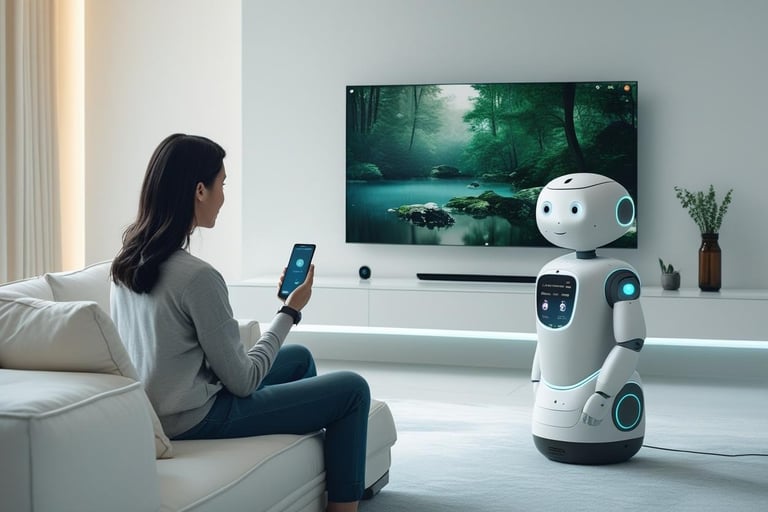

Think about this: You walk into your house, and the lights turn on. Your thermostat knows it’s winter and adjusts the temperature. You open Netflix, and it already knows what you’re in the mood to watch.
This is AI woven into daily life — through smart homes, appliances, and recommendation engines.
Real-world example:
Amazon Alexa, Google Nest, and Apple HomePod use AI to learn your routines and automate comfort.
Netflix and Spotify use collaborative filtering — a form of AI — to curate your personalized content experience.
Takeaways:
AI is becoming the invisible assistant that anticipates your needs.
These systems don’t just follow commands — they learn and adapt over time.
3. AI in Healthcare: Faster Diagnoses, Smarter Decisions


Imagine this: A doctor in a small town uses an app to detect signs of pneumonia in an X-ray. Another uses an AI chatbot to triage patients, reducing emergency room wait times. And an algorithm spots patterns in genetic data faster than any human could.
Welcome to the AI-powered future of medicine — and it’s already saving lives.
Real-world example:
Google’s DeepMind created an AI model that can detect over 50 eye diseases from retinal scans with accuracy matching expert ophthalmologists.
Apollo Hospitals in India uses AI to analyze patient data for early detection of heart disease and cancer.
Why it matters:
AI enhances human expertise, not replaces it.
It helps doctors make faster, more informed, and often more accurate decisions.
Takeaways:
AI democratizes access to quality healthcare, especially in remote or underserved areas.
It reduces diagnostic error and cuts operational bottlenecks — from patient triage to report analysis.
4. AI at Work: Boosting Productivity, Redefining Roles
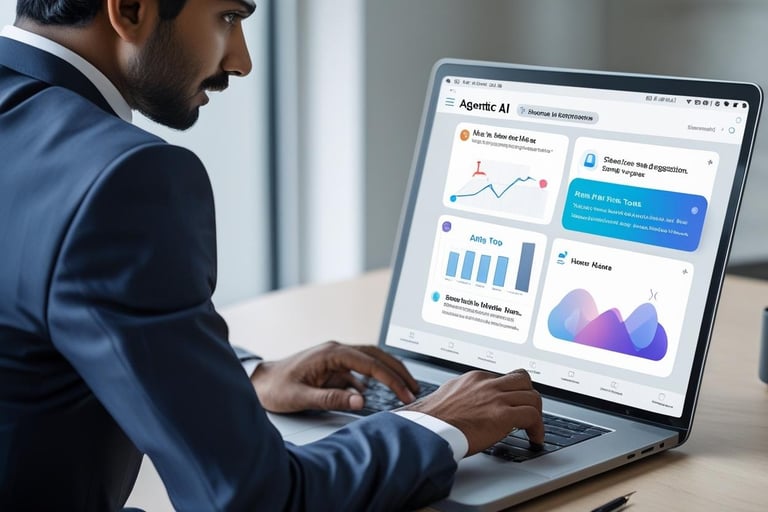

You’ve probably felt it: Tools like ChatGPT or Google’s Gemini writing emails for you, Slack suggesting replies, Canva generating images, or Zoom transcribing your calls. AI has already entered your workday — not with a bang, but a whisper.
From automating mundane tasks to acting as intelligent assistants, AI is changing how we work, what we work on, and what skills we need to thrive.
Real-world example:
Google Workspace now uses AI to auto-generate summaries of long documents.
Indian startups like Yellow.ai are building AI-powered customer support that reduces resolution time by over 60%.
Takeaways:
AI isn’t replacing jobs outright, but reshaping them — shifting humans toward creative, strategic, and interpersonal work.
Knowing how to work with AI will soon be as fundamental as knowing how to use email.
5. AI in Creativity & Learning: From Tools to Collaborators
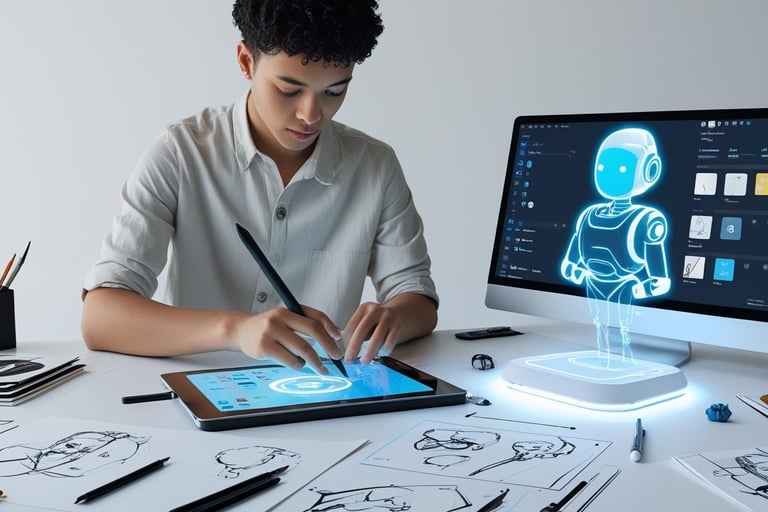

Ever heard a song composed by AI? Or seen a design generated in seconds? Or had a chatbot explain quantum physics like you’re five years old? That’s not the future. That’s now.
AI is no longer just number-crunching — it’s co-creating. It helps writers break through blocks, assists designers in creating prototypes, and helps students grasp difficult topics with tailored explanations.
Real-world example:
Tools like ChatGPT, Midjourney, and RunwayML are now assisting filmmakers, artists, writers, and educators to bring ideas to life faster than ever.
Khan Academy’s AI tutor (“Khanmigo”) helps kids learn in a conversational, personalized way
Why this matters:
AI doesn’t replace human creativity — it amplifies it.
It allows people with no technical or artistic training to explore their ideas visually, musically, or narratively.
Takeaways:
The creator economy is evolving into a collaborator economy — where AI is a co-pilot.
The next big idea? Could be drafted with AI at 2 AM, by someone with no design experience, and still go viral.
Conclusion: AI Is Quietly Reshaping Your World
AI is no longer a concept locked in labs or a buzzword tossed around by tech bros. It’s in your palm, your playlists, your health records, your grocery orders, and your inbox.
The shift is subtle — but profound. It’s changing what we expect from machines, and what we demand from ourselves. It’s inviting us to work smarter, think deeper, and redefine what human creativity, productivity, and connection can look like.
We don’t need to fear the future. We just need to engage with it consciously — knowing that the smartest tool in the room is only as wise as the person guiding it.
Call to Action: Make It Yours
Reflect on where AI already touches your daily life — and try one new AI tool this week
Share this blog with someone curious (or skeptical) about AI’s everyday impact.
